By Jessica Jaithoo
•
November 19, 2025
Author: Ada Tai, MBA, CPHR, SHRM-SCP After publishing “ A Strategic Guide to Organization Restructuring, Part 1 ,” I heard a consistent follow-up question from leaders: “How do you actually re-design an organizational structure so it aligns with strategy, future needs, and the realities of the day-to-day operations?” In this post, I will take you behind the scenes of a recent restructuring project our firm completed and walk you through the steps for designing a structure that works not just today, but also for the next 3 - 5 years. Step One: Understand the Organization Restructuring is not a mechanical exercise. Before anyone touches boxes on an org. chart, leaders must understand the full context of the organization: its challenges, aspirations, constraints, and people. Recently, our team worked with a large public-sector entity that hadn’t reviewed its structure in more than a decade. Over time, several issues had emerged: Long-standing role ambiguity and workflow friction Significant retention and succession challenges A rapidly growing industry and expanding service demands A CEO overwhelmed with too many direct reports Insufficient leadership depth in the layer immediately below the CEO The mandate was clear: Design a structure that could carry the organization for the next 3–5 years. Before jumping in, we partnered with the executive team to answer a set of foundational questions: Why is a new structure needed now? What pressures, risks, or opportunities are driving the change? What is the organization trying to achieve long-term? We reviewed vision, mission, values, strategic priorities, and expected growth. How is the organization currently designed? We examined complexity, formality, decision flows, span of control, talent mix, communication channels, policies, and people challenges. What work must happen to deliver services successfully? We mapped critical processes and clarified who is responsible for what work today and tomorrow. What resources and budget constraints shape the options? We did a reality check. Answering these questions transforms guesswork into a strategic foundation. Step Two: Plan for the Structure Review Once aligned on objectives and constraints, we co-created a plan for the whole structure review. 1. A small project team was assembled within the organization. This was a group of leaders/champions who would serve as our partners, sounding board, and communication anchors throughout the process. 2. To design a structure that reflects reality rather than assumptions, we needed both qualitative and quantitative insights. Together with the project team, we developed a data-collection plan that included: On-site tours to understand operations and workflow in context In-person interviews with employees across departments, tenure levels, roles, and demographic groups Review of organizational documents , including strategy, service data, operational metrics, etc. 3. We also conducted external research to understand the demand for the organization’s services, the competitive landscape, and industry benchmarks. The goal was to build a complete, nuanced picture of how work actually gets done. Step Three: Design the Structure Over the next several weeks, we conducted interviews with 80% of the head office staff and 60% of the frontline workforce. One important message we emphasized to every group is: “This review is not a performance assessment, nor an attempt to eliminate jobs. It is about building a structure that sets everyone up for success.” Gradually, as we gained insights, a clear picture emerged of what the future structure could and should be. We facilitated a series of structural design sessions with the project team. These sessions were collaborative, candid, and grounded in both data and lived experience. Together, we co-created: A transition structure for the upcoming year — providing stability while preparing for change. A future-state, growth-oriented structure designed for the next 3 – 5 years — with more substantial leadership depth, transparent accountability, and defined pathways for talent development and succession. The result was not just an org. chart. It was a blueprint for how the organization would operate, make decisions, support employees, and deliver services at a higher level. Step Four: Support the People Side of Change Even the best-designed structure can fall apart without thoughtful implementation. Once the project team felt confident in the proposed structures, the next steps were: Securing Board approval Preparing a comprehensive communication plan Engaging employees with clarity, empathy, and transparency We had the privilege of presenting the new design and its rationale to the Board. After approval, we supported the organization as it rolled out the change to staff, ensuring leaders were prepared to answer questions, set expectations, and guide their teams through the transition. Structure isn’t just architecture; it impacts morale, trust, and people’s sense of security. The human side must be handled with the same care as the technical side. Final Thoughts Restructuring is a strategic redesign of how an organization works, leads, and delivers value. A thoughtful structure review requires three things: Deep understanding of the organization’s reality Collaborative design grounded in data Careful implementation that supports people When these pieces come together, restructuring becomes more than a response to pressure. It is an opportunity to strengthen leadership capacity, improve clarity and accountability, and position the organization for sustainable growth. Check out my previous blog: “ A Strategic Guide to Organization Restructuring, Part 1 ”











